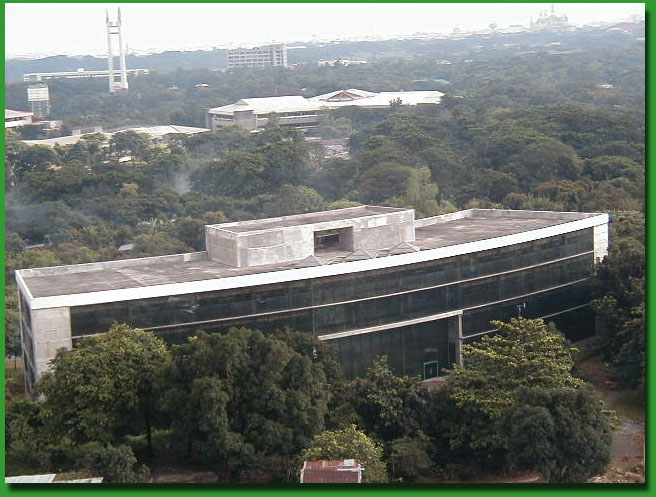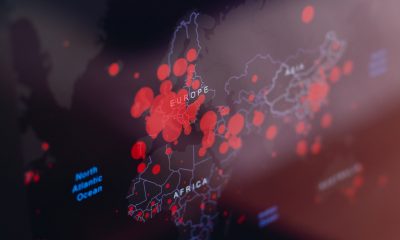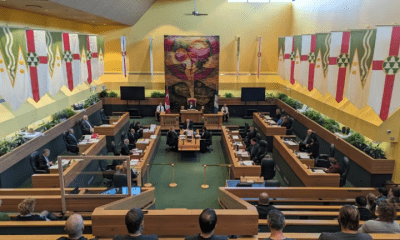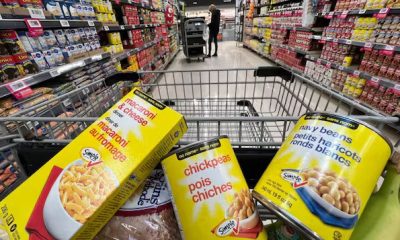Breaking
Whatchamacallit? DOST-PAGASA unravels its typhoon-naming system

The PAGASA main office at the Science Garden Complex, Agham Road, Diliman, Quezon City. Reynaldo K. Lirios / PAGASA.DOST.GOV.PH
When “Kanor” was suddenly dropped from the rolls and “Karding” made it to the list, the procedure of the Philippine Atmospheric, Geophysical, and Astronomical Services Administration of the Department of Science and Technology (DOST-PAGASA) in naming typhoons naturally took the limelight.
According to Venus Valdemoro, DOST-PAGASA’s information officer, the names used this year for typhoons were actually names that had been used four years ago. She said that the country’s weather bureau has been recycling typhoon names for the past few years. “Prior to this (“Kanor” event), we already have lists of typhoon names which we will use again after four years,” explains Valdemoro.
“Kanor” was the controversial typhoon name in September that had to be replaced with the more somber “Karding” to avoid “negative thoughts.”
Normally, DOST-PAGASA yearly prepares a list of 20 names corresponding to the average number of typhoons that enter the country per year. When all the names have been used up, and typhoons are still coming, Valdemoro says that the Bureau has contingencies. “We have auxiliary names up to 10, starting from letter A to letter J.”
PAGASA currently has four sets of names that are used in rotation every four years. However, PAGASA is open to changes and or drop certain typhoon names with the recommendation of the public or any organization subject for deliberation.
Valdemoro says that the lists were generated in 1999 when DOST-PAGASA held a “Name a Bagyo Contest” on typhoon names, eliciting active response from the public who sent in a huge number of suggestions including that from Overseas Foreign Workers (OFWs).
However, names of typhoons that were destructive, resulting in at least P1 billion in damages or have caused at least 300 deaths, are decommissioned.
Moreover, Valdemoro says that the Weather Forecasting Section of DOST-PAGASA’s Weather Division is responsible in assigning names for tropical storms that were decommissioned.
Examples are Pepeng or Parma in 2009 with maximum sustained winds of 195 km/h that caused P27.3 billion in damages and 465 deaths; Frank or Fengshen in 2008 with 160km/h of winds, resulting in P13.5 billion in damages and 557 deaths; and Ondoy or Ketsana in 2009 which was classified by DOST-PAGASA as Severe Tropical Storm with 105 km/h of sustained winds, causing P11 billion in damages and 464 deaths. These are just some of the typhoon names that have been deleted from the list.
Also, typhoon names that have semblance to prominent politicians and celebrities are not allowed to be in the lists as these may cause public ridicule. Same is true with other Filipino terminologies and phrases that are offensive to public decency.
Presently, with the adoption of a gender sensitive workplace in government offices, DOST-PAGASA has sparingly used names of women as typhoon identifier. Instead, it uses a combination of Filipino names and inanimate terms such as “Labuyo” which pertains to a breed of local rooster.
In regard to international names, the Typhoon Committee under the auspices of UN Economic and Social Commission for Asia and the Pacific (ESCAP)/World Meteorological Organization (WMO) assign names from four sets of names submitted by the 14-member countries affected by typhoons. Names like Haiyan (Typhoon Yolanda), Nari (Santi), and Bopha (Typhoon Pablo) are some of the international names that have been used.
Unlike the American and Filipino traditions, the names are not exclusively derived from people but includes names of flowers, animals, food, among others, and they are not in alphabetical order by name but rather in alphabetical order by the country that nominated the name.
The tradition of naming tropical storms goes back in the middle of the 20th Century where American forecasters named tropical storms after people, originally using only female names, using the names of U.S. navy and airforce pilots and forecasters wives and or girlfriends.
It was in 1963 when Philippine forecasters from the DOST-PAGASA started assigning Filipino names to storms following the American practice. Originally, only female nicknames ending in “ing” following the original 19 Filipino alphabet were assigned corresponding to the average of 19 or 20 tropical cyclones that enter the Philippine Area of Responsibility. (S&T Media Service)





















